March was crazy busy for me so I didn’t participate in the Mastery Challenge (jellies & shrubs). This month I decided to combine the April challenge, quick pickles, with Easter, inspired by an article on Food52.com. What intrigued me most wasn’t the pickle itself – I was a bit dubious at the thought of pickled eggs – but using natural dyes to color the eggs. Natural dyes have been used for a long time but this article was focused on dying the whites of the eggs, not the shells.
Preparing the pickling liquid was easy enough – a combination, as with any pickle, of vinegar, water, sugar, and salt. I double the recipe and selected two colors to test. While I liked the range of colors the article displayed, I wasn’t keen on having a dozen pickled eggs so I decided a half dozen was a good amount for me.
I chose yellow and blue as my colors of choice and as you can see from the pictures, the yellow was much more successful.
“Blue” which is really just a dull purple was made from red cabbage and baking powder (for color) and caraway seeds (for flavor). Yellow was made from a mixture of turmeric (for color) and ginger and powdered mustard (for flavor).
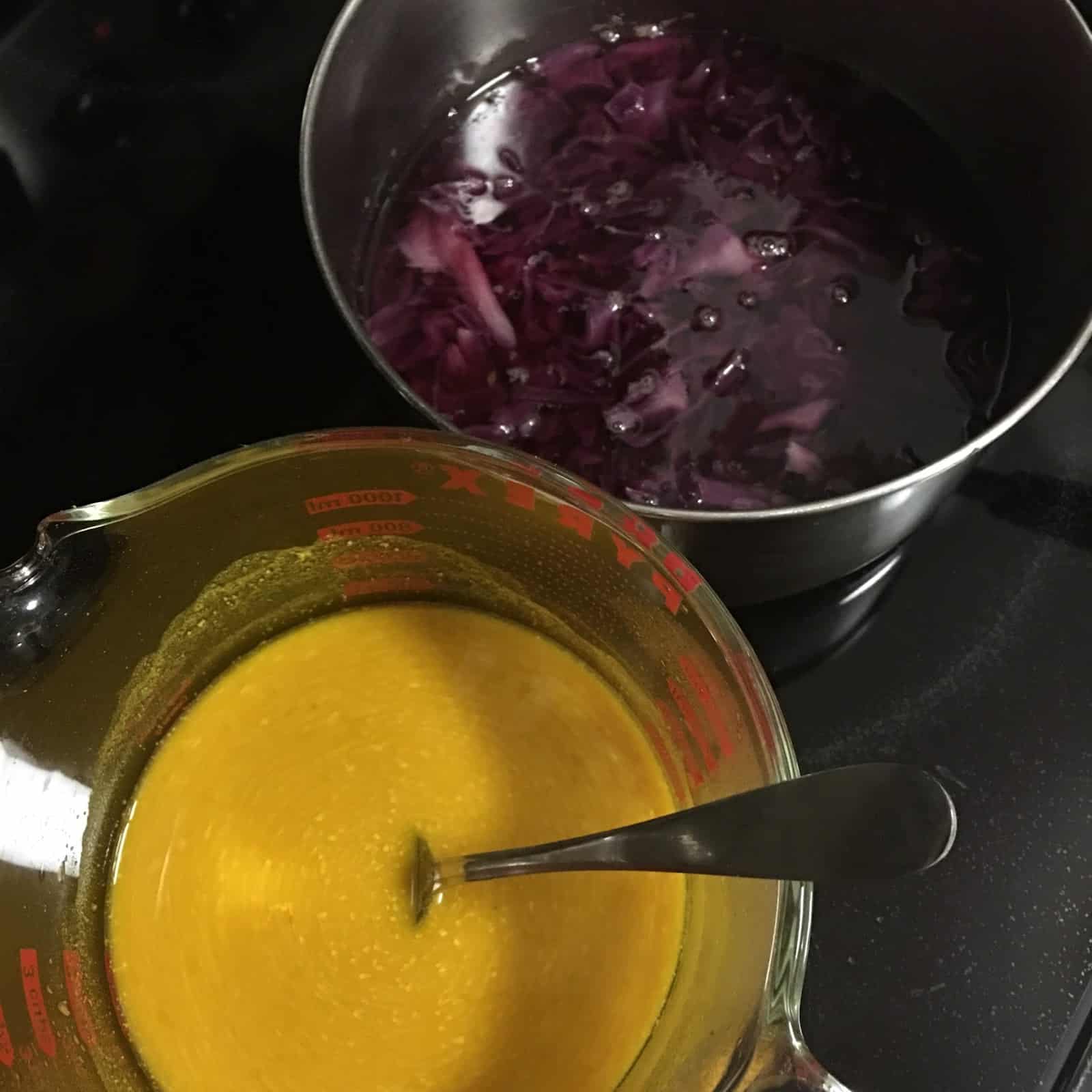
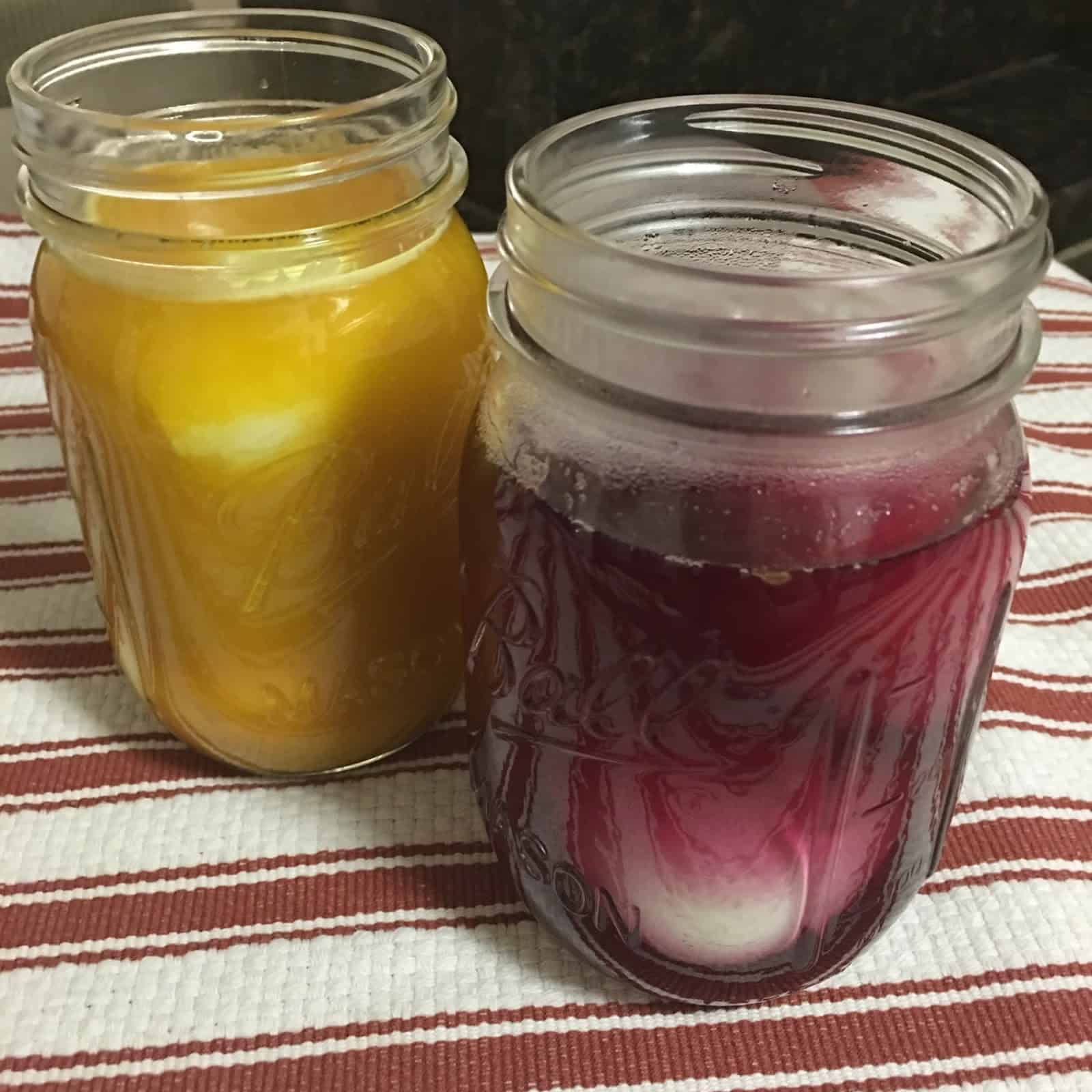
The cooked, peeled eggs are placed in mason jars (three fit comfortably in a pint size jar) and the hot brine is carefully poured into the jar. For the marbled effect I cracked the shells on a couple of eggs but left them on to allow the dye to seep in through the cracks. After gently turning the jars a few times I put them in the refrigerator to cure.
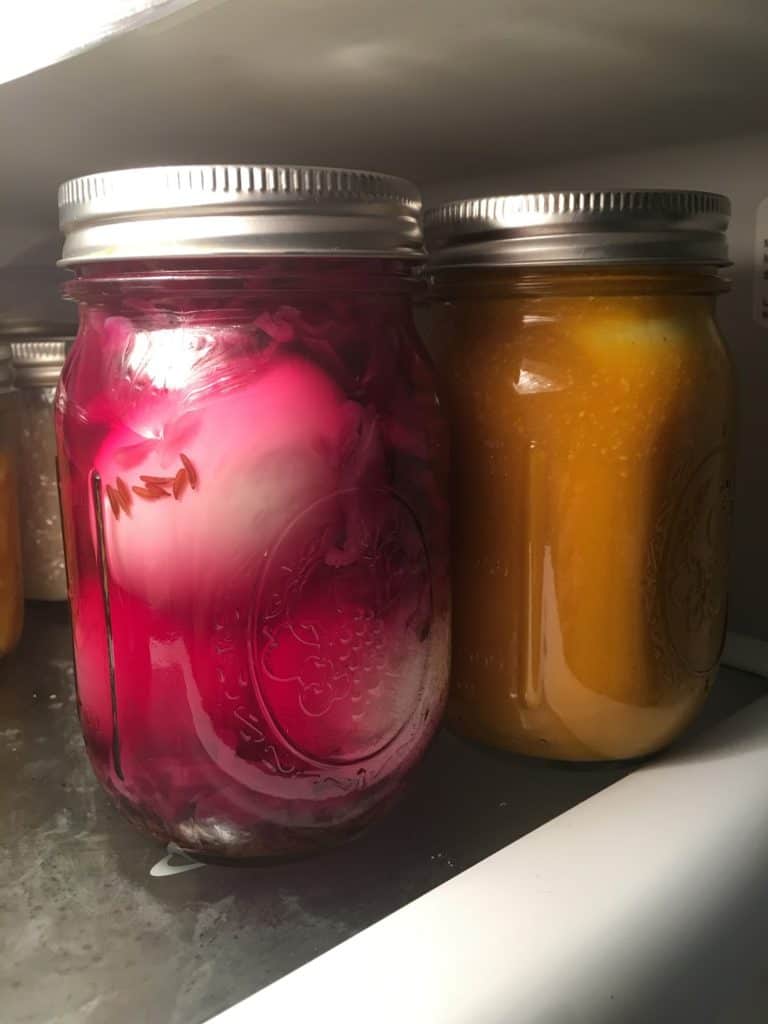
I left the eggs in the brine for a day, gently turning the jars upside down every few hours to distribute the color/flavor agents. The recipe said the eggs could stay in the brine for up to a week but I knew I wouldn’t want a pickled flavor that was that strong. As for the dyes, the egg whites took well to both but the yellow was definitely more vibrant. I may not have used enough baking soda to create the blue I wanted.
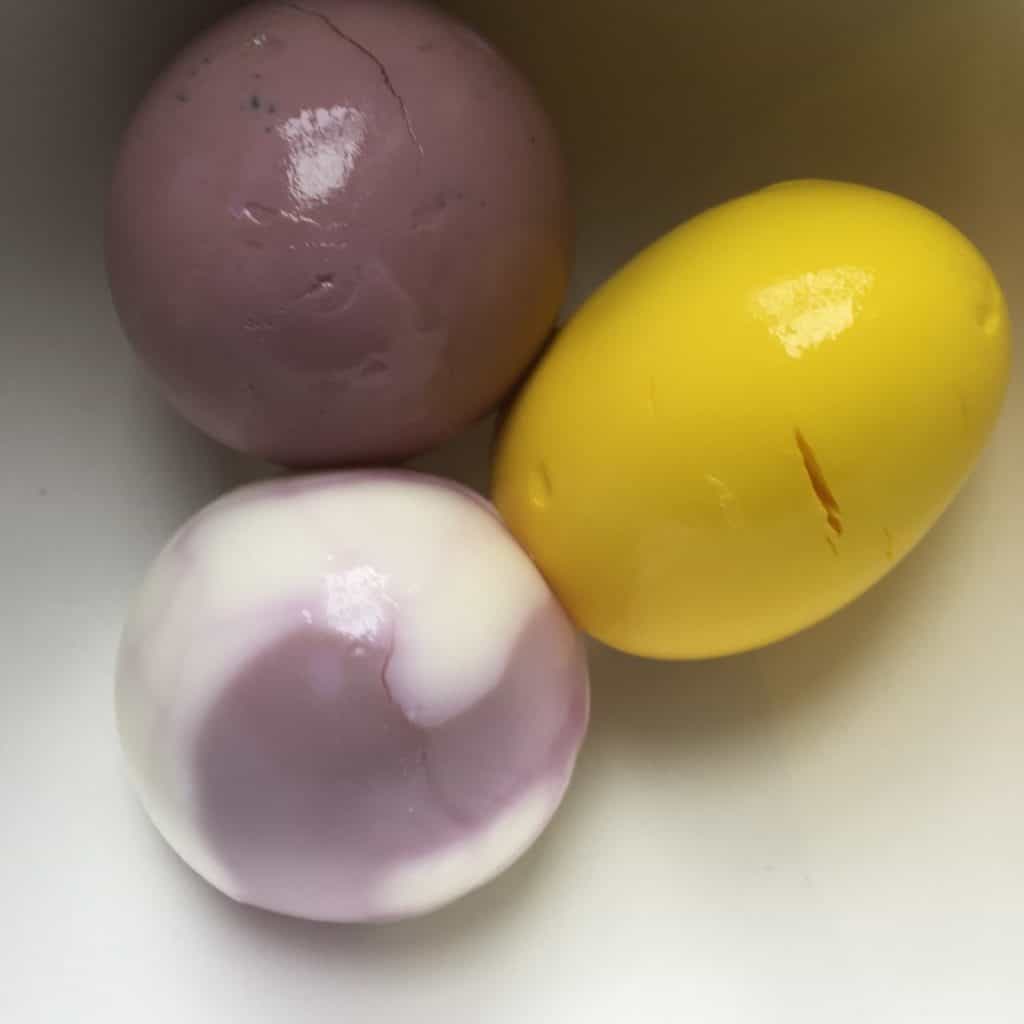
Although the eggs were about a week old, they had developed air pockets in the bases so I got some interestingly shaped eggs. But when sliced opened it was cool to see how far the dye had penetrated the whites.
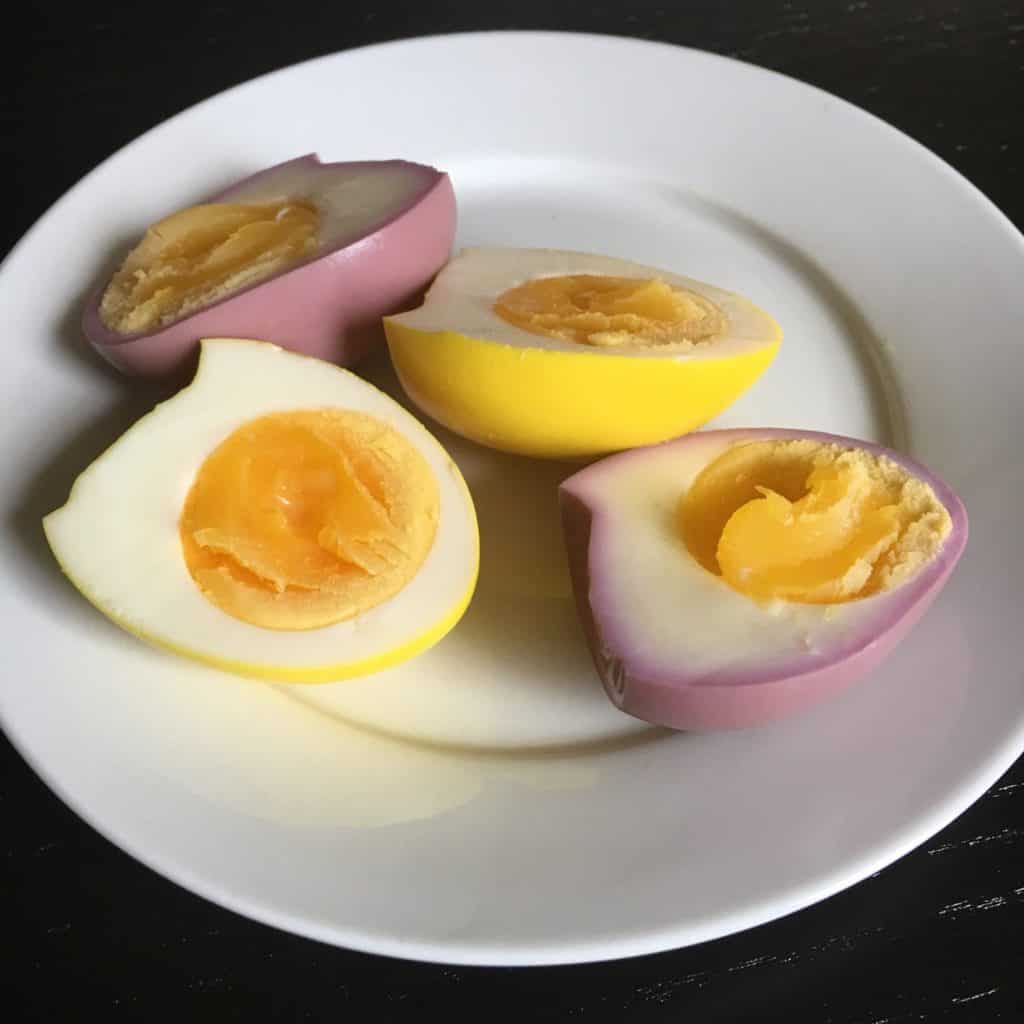
The eggs themselves had a mild, not too unpleasant vinegar flavor. I didn’t necessarily taste the flavor add-ins in either the yellow or purple eggs. I tried eating them with a little freshly cracked pepper and they were fine. With the remaining eggs I made a simple egg salad with a little mayo and more cracked pepper and that worked well too. For my personal taste I wouldn’t have liked any more pickled flavor. Having them in the brine for one day was the max for my taste buds.
So next Easter if you’re looking for something a little different, I’d recommend trying these easy pickled eggs. Check out the article on Food 52 to see the other color options as well as suggestions for using your pickled eggs.

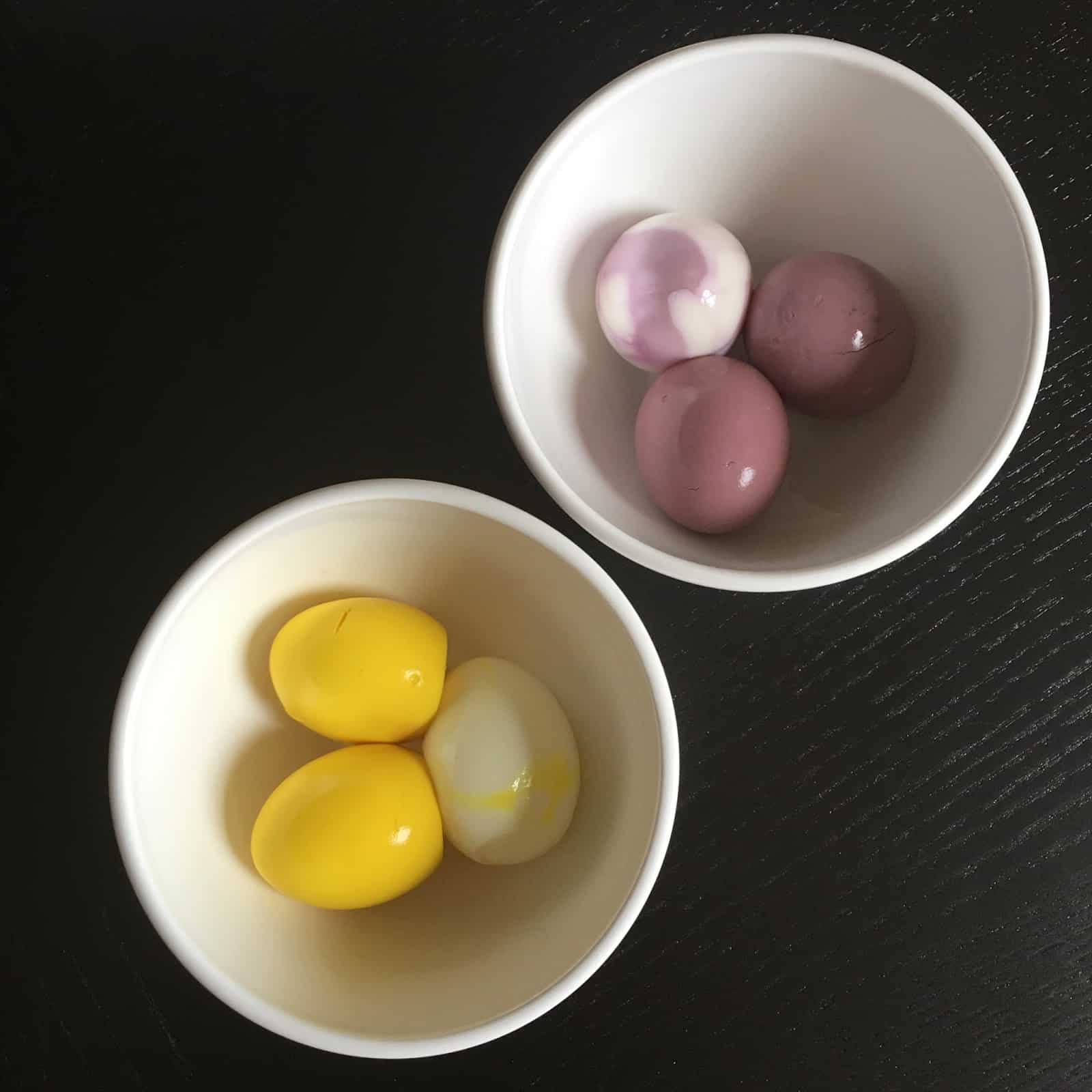
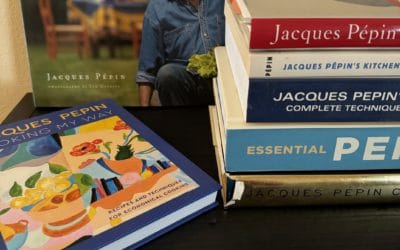
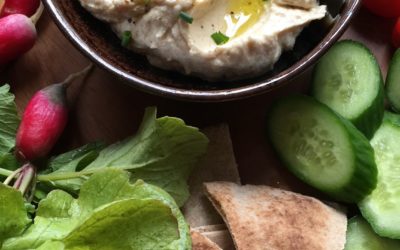

0 Comments